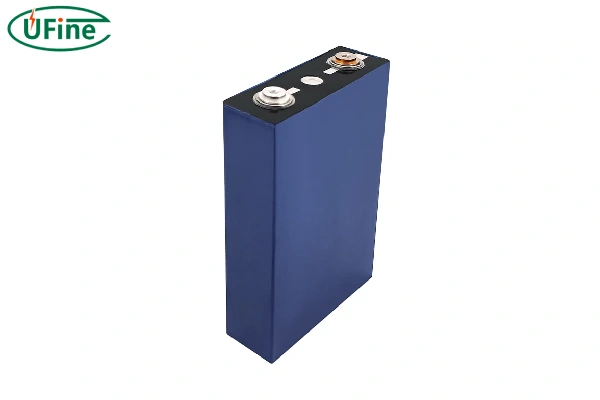
- Part 1. What is the 3.2V LiFePO4 battery?
- Part 2. Why 3.2V?
- Part 3. 3.2V LiFePO4 battery advantages and disadvantages
- Part 4. What is the voltage range of a 3.2V LiFePO4 battery?
- Part 5. 3.2V LiFePO4 battery price
- Part 6. Where is the 3.2V LiFePO4 battery used?
- Part 7. What is the lifespan of a 3.2V LiFePO4 battery?
- Part 8. Is the 3.2V LiFePO4 battery safe?
- Part 9. How to build 12V, 24V & 48V battery packs with 3.2V LiFePO4 batteries
- Part 10. Conclusion
Curious about the 3.2V LiFePO4 battery? These batteries are increasingly popular for their reliability and safety. In this comprehensive guide, we’ll delve into what these batteries are, their advantages and disadvantages, their applications, and how to build battery packs with them. Let’s get started!
Part 1. What is the 3.2V LiFePO4 battery?
A 3.2V LiFePO4 battery is a rechargeable lithium-ion battery that uses lithium iron phosphate (LiFePO4) as its cathode material. Unlike other lithium-ion batteries, it has a nominal voltage of 3.2 volts per cell. This battery type is known for its long cycle life, thermal stability, and safety, making it a preferred choice for many modern applications ranging from electric vehicles to renewable energy storage systems.
Part 2. Why 3.2V?
You might wonder why the voltage is specifically 3.2V. The 3.2V rating comes from the inherent electrochemical properties of lithium iron phosphate. When fully charged, a LiFePO4 cell reaches about 3.65V; when fully discharged, it drops to around 2.5V. The nominal voltage of 3.2V represents the average operating voltage during discharge. This stable voltage is one of the reasons why LiFePO4 batteries are highly regarded for their reliability and performance.
Part 3. 3.2V LiFePO4 battery advantages and disadvantages
Advantages
- Safety: One of the safest lithium-ion battery chemistries. It is highly resistant to thermal runaway and doesn’t overheat easily.
- Long Lifespan: Capable of lasting up to 2000 to 3000 cycles, which is significantly longer than many other batteries.
- Stable Voltage: Provides a consistent voltage output, which is crucial for applications requiring steady power.
- Eco-Friendly: Utilizes non-toxic materials, making it more environmentally friendly than other lithium batteries.
- Fast Charging: This can be charged quickly without significant degradation, which is beneficial for time-sensitive applications.
- Cost: Generally more expensive upfront compared to lead-acid and some other lithium-ion batteries.
- Weight: Tends to be heavier than other lithium-ion batteries due to the denser materials used.
- Energy Density: Lower energy density compared to lithium cobalt oxide (LiCoO2) batteries, meaning it stores less energy per unit of weight.
Part 4. What is the voltage range of a 3.2V LiFePO4 battery?
The voltage range of a 3.2V LiFePO4 battery is typically between 2.5V (fully discharged) and 3.65V (fully charged). Operating within this range ensures the battery maintains its health and longevity. Keeping the battery within this voltage range also helps prevent potential damage and ensures optimal performance.
Part 5. 3.2V LiFePO4 battery price
The price of 3.2V LiFePO4 batteries can vary significantly based on their capacity and application. For instance:
- Small Capacity Cells (10Ah-20Ah): These typically range from $10 to $20 per cell.
- Medium Capacity Cells (50Ah-60Ah): These might cost around $50 to $70 per cell.
- High Capacity Cells (100Ah and above): Prices for these can range from $150 to $200 per cell.
Part 6. Where is the 3.2V LiFePO4 battery used?
Due to their stable performance and safety, 3.2V LiFePO4 batteries are used in numerous applications, including:
- Electric Vehicles (EVs): Powering cars, bikes, and scooters due to their long life and safety.
- Solar Energy Systems: Storing energy from solar panels for later use.
- Portable Electronics: Commonly found in laptops, tablets, and power tools.
- Marine Applications: Used in boats and yachts for reliable power.
- Backup Power: Integral in Uninterruptible Power Supplies (UPS) for homes and businesses.
Part 7. What is the lifespan of a 3.2V LiFePO4 battery?
The lifespan of a 3.2V LiFePO4 battery is one of its most attractive features. These batteries can last between 2000 to 3000 charge cycles, which significantly exceeds the lifespan of many other types of batteries. In practical terms, this translates to approximately 5 to 10 years of use, depending on how frequently the battery is charged and discharged. Proper maintenance, such as avoiding extreme temperatures and not over-discharging the battery, can extend its lifespan even further.
Part 8. Is the 3.2V LiFePO4 battery safe?
3.2V LiFePO4 batteries are among the safest lithium-ion batteries available. Their safety features stem from the stable chemical structure of lithium iron phosphate, which is highly resistant to thermal runaway—a condition that can lead to overheating and fire. Additionally, LiFePO4 batteries do not contain cobalt, which can pose environmental and health risks. Their robust design also includes safety mechanisms to prevent overcharging and deep discharging, further enhancing their safety profile.
Part 9. How to build 12V, 24V & 48V battery packs with 3.2V LiFePO4 batteries
The above is a common LiFePO4 Battery capacities table.
Building higher voltage battery packs with 3.2V LiFePO4 cells involves connecting multiple cells in series. Here’s a detailed step-by-step guide for each configuration:
1. Building a 12V Battery Pack
To build a 12V battery pack, you need to connect four 3.2V LiFePO4 cells in series:
Gather Components:
- 4 x 3.2V LiFePO4 cells: Battery Management System (BMS) suitable for a 12V pack
- Connectors: Insulating materials and a battery case
- Arrange Cells: Place the cells in a series configuration. This means connecting the positive terminal of the first cell to the negative terminal of the second cell, and so on.
- Connect Cells: Use solid connectors or wires to link the cells securely. Ensure that the connections are tight and well-insulated to prevent short circuits.
- Attach BMS: Connect the BMS to each cell according to the manufacturer’s instructions. The BMS will monitor and balance the cells during charging and discharging to ensure safety and longevity.
- Secure Pack: Place the assembled cells and BMS into a battery case. Secure all components to avoid movement and ensure all connections are insulated.
2. Building a 24V Battery Pack
For a 24V battery pack, you will need eight 3.2V LiFePO4 cells connected in series:
Gather Components:
- 8 x 3.2V LiFePO4 cells
- BMS suitable for a 24V pack
- Connectors: Insulating materials and a battery case
- Arrange Cells:Connect the cells in series to achieve a total nominal voltage of 25.6V (3.2V x 8).
- Connect Cells:Link the cells securely using connectors or wires, ensuring each connection is firm and insulated.
- Attach BMS:Connect the BMS to the cells, which will manage the balance and safety of the pack.
- Secure Pack:Place the entire setup in a battery case, ensuring all connections and components are secure and insulated.
3. Building a 48V Battery Pack
To build a 48V battery pack, connect sixteen 3.2V LiFePO4 cells in series:
Gather Components:
- 16 x 3.2V LiFePO4 cells
- BMS suitable for a 48V pack
- Connectors; Insulating materials and a battery case
- Arrange Cells: Place the cells in a series configuration to achieve a total nominal voltage of 51.2V (3.2V x 16).
- Connect Cells: Securely link the cells with connectors or wires, ensuring all connections are insulated and firm.
- Attach BMS: Connect the BMS to manage the balance, charging, and discharging of the battery pack.
- Secure Pack: Place the battery assembly into a case, ensuring all components are securely fastened and insulated.
Part 10. Conclusion
The 3.2V LiFePO4 battery offers a robust, safe, and long-lasting power solution for a variety of applications. Whether you’re powering an electric vehicle, storing solar energy, or building a custom battery pack, understanding the intricacies of these batteries
Related Tags:
More Articles

What is the Difference Between Silver Zinc Battery vs. Lithium-ion Rechargeable?
Compare silver zinc and lithium-ion rechargeable batteries: energy density, cycle life, safety, cost, and uses in drones, medical devices, EVs, and electronics.
What are Watts and Watt Hours in Battery?
Understand watt vs watt-hour in batteries: key differences, how to calculate capacity, and why they matter. Includes free comparison table.
Best 10 Blood Pressure Monitor Battery Review: Finding the Most Reliable
Are you looking for a reliable Blood Pressure Monitor battery? Here is a complete guide with the top 10 best blood pressure monitor batteries.
Bluetooth Headphone Battery Guide: All You Need to Know
Maximize headphone battery life with expert tips! Learn how to charge, check, troubleshoot, and choose the best bluetooth headphone battery in 2025.
LiFePO4 Battery VS. Lithium-ion Polymer Battery: Which One Is Best?
Comprehensive comparison of LiFePO4 vs Lithium Ion Polymer batteries: energy density, safety, lifespan, cost. Find out which battery suits your needs in 2025.





